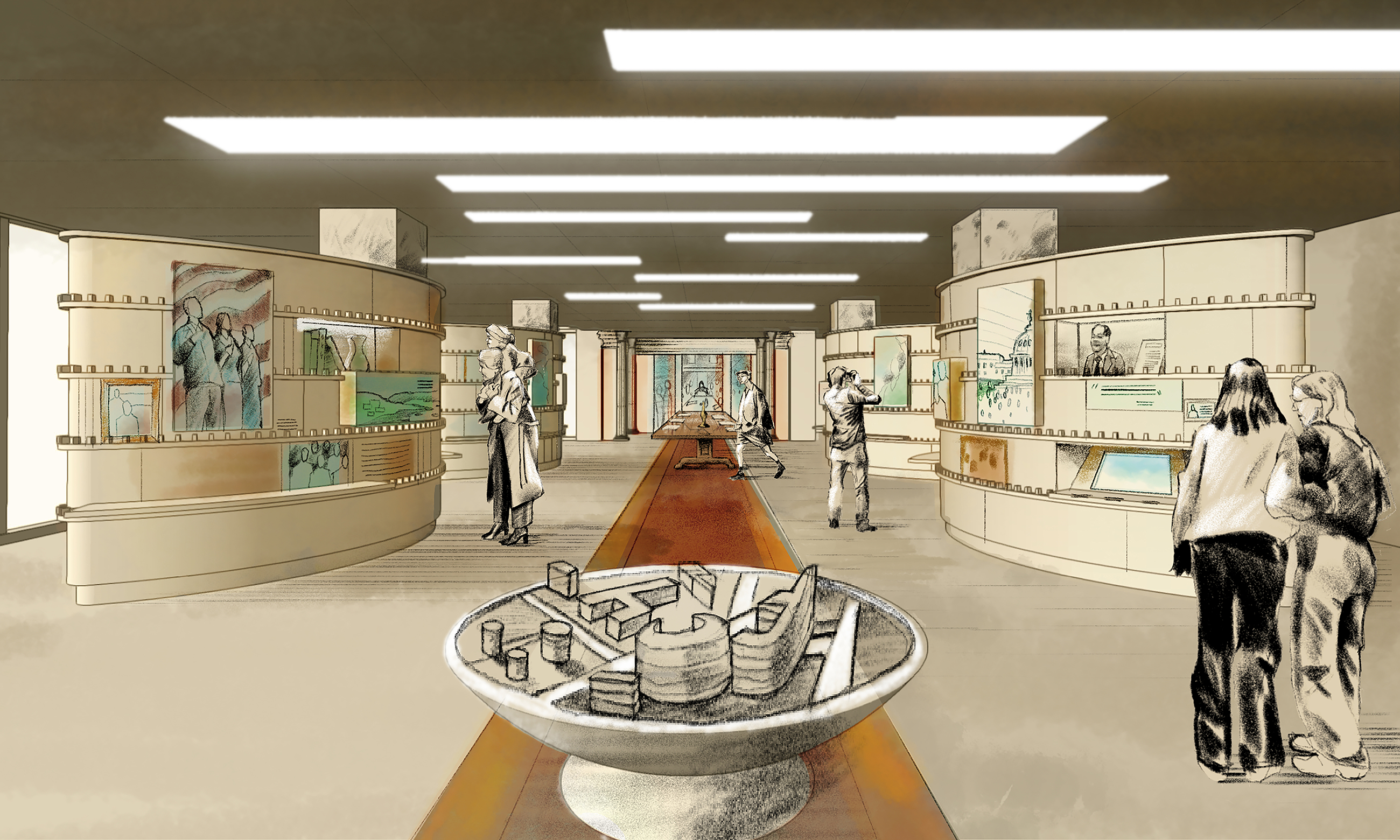We were standing in Lafayette Square to hear the suffragettes make their case for women’s voting rights. One of us listened attentively to the audio recording on our phone while watching renderings of 20th-century activists through the camera. The other was stuck in technical limbo.
Today, the first 16 stops of the interactive “51 Steps to Freedom Trail” went public in DC. The founders say they plan to have all 51 sites of the augmented-reality experience available by July 4, 2026, in time for the 250th anniversary of the Declaration of Independence.
The namesake nonprofit organization behind the effort says that this is the world’s largest outdoor museum, though a Thai museum spanning 320 acres claims the same. If you buy the premise that 51 Steps to Freedom turns the entire city of DC into a museum, it’s certainly bigger, at over 43,000 acres, but this tour isn’t a built museum. It’s a series of images, videos, and audio clips viewed through your phone camera when you pan across a landmark.
You download an app to access historical facts and more than 300 stories. A digital map that eventually will display the 51 sites and span eight miles tells users where to go to unlock these tidbits—the sites are clustered so you can check off a few at a time. Point your camera at Howard Theatre, for example, and a virtual parade of artists including Duke Ellington recount the theater’s history. The stop at the Washington Monument is a key photo-op: When you match the real monument to a dotted outline on your screen, a virtual butterfly flutters to a perch on the marble structure. At some of the landmarks, like the Go-Go Museum and Frederick Douglass’s home, 51 Steps offers snippets from inside.
The tour aims to educate viewers about the history of the District and the nation. At a press conference on Monday, DC Council member Kenyan McDuffie said it incorporates stories from members of marginalized groups as well. The board assembling the history includes current and former faculty members from the University of the District of Columbia, Howard University, George Washington University, and Georgetown University.
While the tour’s title might seem to be a nod toward DC statehood, according to the project’s website the 51 actually represents 50 states and one nation. Still, the tour is full of local history: Viewers can play virtual drums at the Go-Go Museum, learn about notable patrons of Ben’s Chili Bowl, and hear Mayor Muriel Bowser discuss Black Lives Matter Plaza—though the tour’s map refers to it as “Liberty Plaza,” which is the name offered in a recent bill by representative Andrew Clyde that threatens withholding federal funds from DC if the square’s name doesn’t change. (Bowser, who decided earlier this year to remove the BLM mural, is an honorary member of the project’s leadership.)
Speakers at the press conference noted that the tour emphasizes local history with the intention of pushing visitors to discover businesses in different parts of the city. Project co-founder HH Leonards even floated the idea that DC cobblers might gain an influx of customers who would be wearing out their shoes while traversing the city in search of historical facts. This suggestion gave us pause—would our shoes really wear out from a few days of walking in DC? What seemed more likely to wear down were our phone batteries. And our stamina: one complication of an “outdoor museum,” of course, is the weather. As for us patronizing local businesses, we will say that taking part of the tour in the current heat and humidity certainly made purchasing a cold beverage appealing.



















